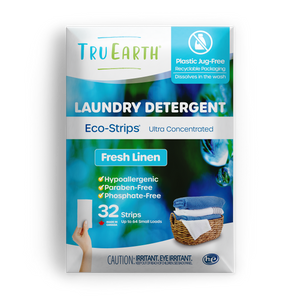Fabrics play a significant role in our daily lives, from our clothes to the upholstery on our furniture. Each type of fabric requires specific care and cleaning methods to maintain its quality and longevity. In this article, we will explore the various types of fabrics commonly found in our households and provide valuable insights on how to clean them effectively.
Whether you're dealing with delicate silk, sturdy cotton, or synthetic blends, understanding the proper cleaning techniques will help keep your fabrics fresh and vibrant.

Natural Fibers
Natural fibers, such as cotton, linen, and silk, are derived from plant or animal sources. Each natural fiber has unique characteristics that require specific cleaning approaches to preserve their integrity.
Cotton
Cotton is a versatile and widely used fabric known for its durability and breathability. To clean cotton fabrics, a machine or hand washing with a gentle detergent is typically suitable. Following the care instructions on the garment label and separate colors is essential to prevent dye bleeding. Avoid using hot water or harsh chemicals that may cause shrinkage or color fading. Additionally, air drying or tumble drying on a low heat setting is recommended to maintain the fabric's quality.
Linen
Linen is a lightweight and breathable fabric made from flax fibers. It offers a crisp and natural look, making it ideal for summer clothing and home textiles. Linen garments are best washed in cool or lukewarm water with mild detergent. Hand or machine washing on a gentle cycle suits most linen fabrics. It's crucial to avoid over-drying to prevent excessive wrinkling. Ironing linen while slightly damp can help achieve a smooth finish.
Silk
Silk is a luxurious and delicate fabric renowned for its softness and lustrous appearance. Cleaning silk requires extra care to preserve its beauty. Hand washing in cold water using a mild detergent specifically formulated for silk is recommended. Gently agitate the fabric and avoid wringing or twisting. Rinse thoroughly and press out excess water with a clean towel. Air drying or laying the garment flat is preferable to prevent stretching. Iron on a low heat setting or use a steamer to remove wrinkles.
Synthetic Fibers
Synthetic fibers are man-made materials designed to mimic the properties of natural fibers while offering enhanced durability and performance. Cleaning synthetic fabrics requires attention to specific guidelines to maintain their appearance and functionality.
Polyester
Polyester is a popular synthetic fabric known for its strength, wrinkle resistance, and quick-drying properties. Machine washing polyester garments in warm water with a gentle detergent is generally suitable. Avoid using bleach or fabric softeners that may damage the fabric.

Polyester can be tumble-dried on a low heat setting or air-dried. Ironing at a low temperature or using a steamer can help remove wrinkles, but always check the garment label for specific instructions.
Nylon
Nylon is a durable, lightweight synthetic fabric commonly used in sportswear, swimwear, and hosiery. Machine washing nylon garments in cold or warm water with mild detergent is recommended. Use a gentle cycle to prevent excessive agitation. Avoid using bleach or fabric softeners that may weaken the fabric.
Air drying or using a low heat setting in the dryer is preferable. Nylon fabrics are generally wrinkle-resistant, but use a low-temperature iron or steamer if necessary.
Specialized Fabrics
Certain fabrics require specialized cleaning methods due to their unique properties or finishes. Here are a few examples:
Wool
Wool is a natural fiber known for its warmth and insulation properties. Due to its delicate nature, wool garments are best dry cleaned or hand washed using a gentle wool detergent. Avoid using hot water or excessive agitation to prevent shrinkage or felting.
Gently squeeze out excess water and reshape the garment while damp. Air drying or laying flat is essential to prevent stretching. Ironing wool garments is generally not necessary, but if needed, use a low-temperature setting with a pressing cloth.
Leather
Leather is a durable and luxurious material used in various products, including jackets, bags, and furniture upholstery. Cleaning leather requires specialized products and techniques to maintain its appearance and longevity.
Regularly wiping the surface with a soft cloth to remove dust and dirt is recommended. Use a leather cleaner or mild soap mixed with water for stains or spills. Gently rub the affected area and wipe with a clean, damp cloth. Conditioning the leather periodically can help keep it soft and prevent cracking.

Move Forward Safely Washing Fabrics!
In conclusion, understanding the various types of fabrics and how to clean them is essential for maintaining their quality and appearance. Whether you're dealing with natural fibers like cotton, linen, and silk or synthetic fabrics such as polyester and nylon, following the appropriate cleaning techniques will help prolong the lifespan of your garments and textiles.
Additionally, specialized fabrics like wool and leather require specific care to preserve their unique properties. By adopting the right cleaning methods and products, you can keep your fabrics looking fresh, vibrant, and in excellent condition for years to come.


